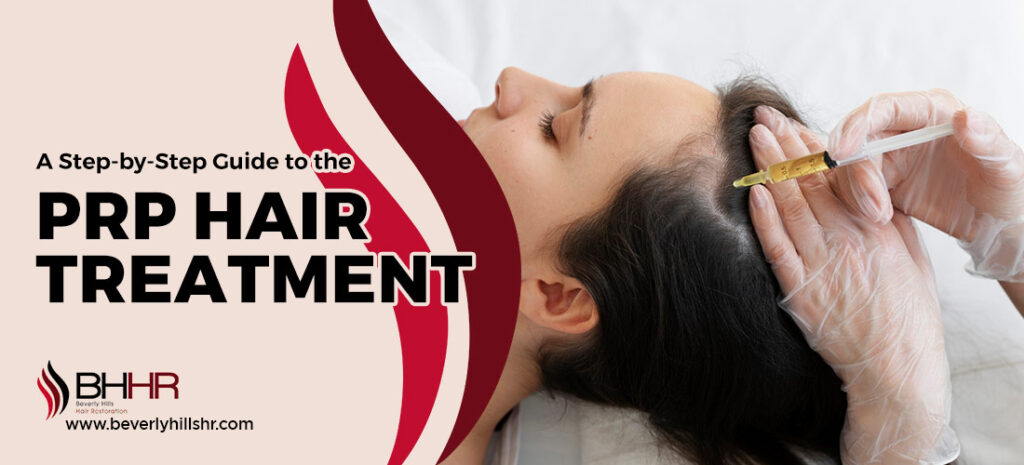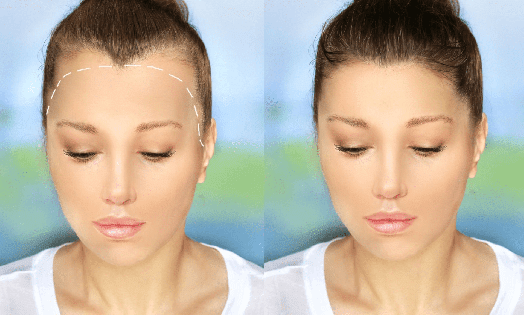
Hair loss is a common problem affecting millions of people worldwide. Whether caused by genetics, stress, or medical conditions, losing hair can be distressing. Fortunately, medical advancements have led to treatments like Platelet-Rich Plasma (PRP) therapy, which helps stimulate hair growth naturally.
In this article, we will explain how PRP treatment for hair works, step by step. If you’re considering this procedure, keep reading to learn everything you need to know!
What is PRP Treatment for Hair?
PRP (Platelet-Rich Plasma) treatment is a non-surgical procedure that uses your own blood to promote hair growth. The platelets in your blood contain growth factors that help heal tissues and regenerate hair follicles.
PRP therapy is a popular solution for both men and women experiencing hair thinning or baldness. It is a safe and natural approach to restoring hair without surgery.
Step-by-Step Process of PRP Treatment for Hair:-
Step 1: Drawing Blood
The first step is simple. A medical professional will draw a small amount of blood from your arm using a syringe. This process is similar to a routine blood test and takes only a few minutes.
Step 2: Separating the Plasma
Once your blood is collected, it is placed into a centrifuge machine. This machine spins the blood at a high speed to separate the plasma from the other components.
The plasma contains growth factors and proteins that help stimulate hair follicles and improve hair thickness.
Step 3: Preparing the PRP Injection
After the plasma is separated, the doctor extracts the platelet-rich plasma from the test tube. This golden-colored liquid is now ready for injection into your scalp.
Step 4: Numbing the Scalp (Optional)
To reduce discomfort, the doctor may apply a numbing cream or local anesthesia to your scalp. PRP injections can cause mild discomfort, so numbing helps make the procedure more comfortable.
Step 5: Injecting PRP into the Scalp
Using a fine needle, the doctor injects small amounts of PRP into the areas of your scalp where hair is thinning. These injections are placed near the hair follicles to stimulate growth effectively.
Step 6: Post-Treatment Care
After the procedure, you may experience mild redness or swelling, which usually subsides within a few hours. Your doctor may provide post-care instructions, such as avoiding hair washes for 24 hours and not exposing your scalp to direct sunlight.
How PRP Treatment Works for Hair Growth
PRP (Platelet-Rich Plasma) treatment for hair growth works by using the body’s own growth factors to stimulate hair follicles. First, a small amount of the patient’s blood is drawn and spun in a centrifuge to separate the platelet-rich plasma from other components. This concentrated PRP, rich in growth factors and proteins, is then injected into the scalp in areas of hair thinning. PRP helps revive dormant follicles, improve blood circulation, and strengthen hair strands. The procedure is minimally invasive, safe, and requires little downtime. For best results, 3–4 sessions followed by maintenance every 4–6 months are recommended.
- Activates Hair Follicles – The growth factors in PRP help dormant hair follicles wake up, leading to new hair growth.
- Strengthens Existing Hair – PRP improves the health and thickness of existing hair strands.
- Increases Blood Flow – Better circulation in the scalp means more nutrients reach the hair roots, helping them grow stronger.
- Reduces Hair Shedding – PRP therapy slows down hair loss, making your hair appear fuller over time.
Who is a Good Candidate for PRP Hair Treatment?
A good candidate for PRP hair treatment is someone experiencing early-stage hair thinning or mild to moderate hair loss, particularly due to androgenetic alopecia (male or female pattern baldness). It works best for individuals with active hair follicles, as PRP stimulates existing follicles rather than creating new ones. Those with stress-related hair loss, postpartum shedding, or traction alopecia may also benefit. Ideal candidates should be in good overall health, without conditions like blood disorders, autoimmune diseases, or scalp infections. PRP is less effective for complete baldness or severe scarring alopecia. A consultation with a specialist can determine suitability for the treatment.
Men and women with genetic hair loss (androgenic alopecia)
People with thinning hair but still have active hair follicles
Those looking for a non-surgical hair restoration option
People with stress-induced hair loss
Benefits of PRP Treatment for Hair
PRP (Platelet-Rich Plasma) treatment offers numerous benefits for hair restoration. It stimulates natural hair growth by using the body’s own platelets, making it a safe, non-surgical procedure with minimal risk of allergic reactions. PRP strengthens hair follicles, increases hair thickness, reduces shedding, and improves scalp health by enhancing blood circulation. It is a quick, minimally invasive treatment with little downtime. PRP can be combined with medications like minoxidil or finasteride for enhanced effectiveness. Regular maintenance sessions help sustain long-term hair regrowth, making PRP an effective solution for promoting fuller, healthier, and stronger hair without significant side effects.
Natural and Safe – Uses your own blood, reducing the risk of side effects.
Non-Surgical – No need for surgery or hair transplants.
Minimal Downtime – You can return to daily activities after treatment.
Improves Hair Thickness – Helps strengthen and thicken existing hair.
Prevents Further Hair Loss – Slows down hair shedding and thinning.
Possible Side Effects of PRP Hair Treatment
PRP hair treatment is generally safe, but some mild side effects can occur. Common reactions include temporary redness, swelling, tenderness, or bruising at the injection sites. Some patients may experience mild scalp pain, itching, or sensitivity, which usually subsides within a few days. In rare cases, there is a risk of infection, scar tissue formation, or nerve damage if the procedure is not performed correctly. Individuals with blood disorders, autoimmune diseases, or scalp infections should avoid PRP. Choosing an experienced specialist and following proper aftercare, such as avoiding harsh chemicals and excessive sun exposure, helps reduce potential risks.
Redness and swelling at injection sites
Temporary tenderness or soreness
Mild bruising
Rare risk of infection (if proper hygiene isn’t followed)
Cost of PRP Hair Treatment
The cost of PRP therapy varies based on location and clinic. On average, a single session costs between $500 to $1,500. Since multiple sessions are needed, the total cost may range from $1,500 to $5,000.
Unfortunately, most insurance plans do not cover PRP treatment as it is considered a cosmetic procedure.
Alternative Treatments for Hair Loss
Several alternative treatments are available for hair loss, depending on its cause and severity. Medications like minoxidil (topical) and finasteride (oral) help slow hair loss and promote regrowth. Low-Level Laser Therapy (LLLT) stimulates hair follicles using light energy. Hair transplant surgery offers a permanent solution by redistributing healthy follicles. Scalp microneedling enhances blood flow and improves treatment absorption. Nutritional supplements with biotin, iron, zinc, and vitamin D support hair health. Ayurvedic and herbal remedies, such as rosemary oil and saw palmetto, may also help. Consulting a specialist is essential to determine the best treatment based on individual hair loss patterns.
Minoxidil (Rogaine) – A topical solution that stimulates hair growth.
Finasteride (Propecia) – An oral medication that prevents hair loss.
Hair Transplant Surgery – A permanent solution for severe baldness.
Laser Therapy – Low-level laser therapy (LLLT) to promote hair growth.
Conclusion:-
PRP treatment for hair is a safe, natural, and effective way to combat hair loss. By following a step-by-step process, this therapy stimulates hair growth, strengthens existing hair, and reduces shedding.
If you are experiencing hair thinning and looking for a non-surgical solution, PRP therapy might be the right choice for you. Consult a hair specialist to determine if you are a good candidate and start your journey to healthier, fuller hair today!

